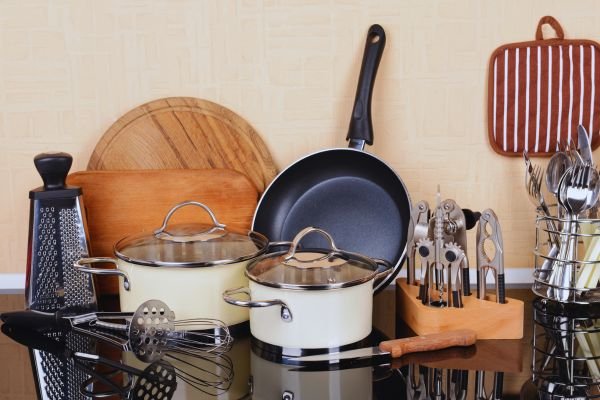Are you excited to meet your new buddies and feel the electrifying buzz of campus life? Instead of your home, the dorm will be your new habitat for at least a few years. Yet the dorm will keep you cozy, but your stomach will occasionally growl, reminding you that you need fuel too! How do students manage food in a dorm? Well, “Do college dorms have kitchens?” Well, in terms of food (we mean the real foods!), you’ll be delighted to know that most dorms allow microwave cooking. Read this post to unveil the secrets of vibrant campus living. Beyond just cooking facilities, we’ll also explore tips and hacks to master the art of dorm-friendly cooking. So, whether you’re a self-proclaimed foodie or simply looking to satisfy those occasional hunger pangs, join us on this dorm culinary journey and enlighten yourself with everything about dorm kitchens.
See Also: Can You Go to College at Any Age
Do College Dorms Have Kitchens?
No, college dorms typically do not have full-fledged kitchens. Usually, traditional college dorms do not have full kitchens. Instead, they may provide communal kitchenettes or common areas with essential cooking appliances for each floor, such as microwaves, stoves, sinks, and refrigerators. These communal kitchens may require reservations to manage usage among many students.
Often, you might find communal microwaves or fridges unavailable while shared by the dorm’s residents. Also, be cautious about using communal fridges, as items might disappear or be consumed by others! However, some colleges and universities offer suite-style or apartment-style dorms, which may include a shared kitchen area where students living in the suite or apartment can prepare meals. These types of accommodations are available for upper-level students who are willing to pay extra.

Why Do College Dorms Not Have Kitchens?
College dorms usually lack individual kitchens to ensure all residents’ safety from potential fire hazards. However, dorms are designed with communal dining halls located conveniently. Many universities may encourage students to have a meal plan while residing in dorms. Though it might initially seem like a financial push, these meal plans are reasonably priced and surprisingly convenient. Meal plans also offer various dining options that cater to different dietary preferences and ensure students are well-nourished throughout the day. Plus, the communal dining experience fosters community and camaraderie as students come together to share meals and exchange stories.
Can I Bring My Own Cooking Appliances To A College Dorm?
Yes, you can, but you might follow some restrictions on bringing kitchen appliances. Typically, appliances with an open flame are not permitted in college dorm rooms. Items like hot plates or toaster ovens are considered “banned items” due to safety concerns. It’s essential to respect these regulations and not attempt to sneak in any prohibited items, even if you strongly desire to cook your favorite meals. Violating these rules can lead to serious consequences, ranging from minor infractions to severe actions like expulsion from the dormitory. Instead, explore alternative solutions that comply with the university’s policies. The following cooking appliances you can bring in a college dorm:
Mini Fridge:
Generally, mini fridges are not provided in dorms but often allow students to bring a mini fridge for personal use. Mini fridges have several sizes and are designed to fit compactly in dorm rooms. It provides a convenient way to store perishable items, drinks, and snacks and enjoy a bit of independence while living on campus.
Coffee Maker:
Many colleges permit pod-style coffee makers in dorm rooms because they are generally considered safer and more convenient than traditional drip-style coffee makers. Pod-style coffee makers use pre-packaged coffee pods or capsules, and they often have automatic shut-off features, reducing the risk of fire hazards. On the other hand, traditional drip-style coffee makers may not be allowed in dorms due to their potential fire risks, as they require a hot plate to keep the coffee warm.

How To Cook In A College Dorm Without A Kitchen?
Navigating college life without a full kitchen can be challenging, but fear not, as there are plenty of creative ways to satisfy your hunger. Here are some easy-to-prepare food items that students can prepare in a shorter time without a kitchen in a dorm:
Scrambled Egg:
Microwaving scrambled eggs is a quick and convenient method. Just beat eggs with milk, seasonings, and microwave for 1-1.5 mins in a microwave-safe bowl. It’s a time-saving breakfast option and requires minimal cleanup. While the texture may differ from stovetop cooking, it remains popular for college students seeking a simple and nutritious meal.
Brownie:
Baking a brownie in a coffee mug is a fun and easy dessert option that can be prepared quickly using a microwave. This delightful single-serving treat is an ideal to satiate sweet cravings without needing an entire oven or extensive baking skills. The recipe typically involves combining simple pantry ingredients like flour, sugar, cocoa powder, oil, and milk into a mug, then microwaving it for a short period. And your delicious brownie will be ready to enjoy straight from the mug.
Ramen Noodles:
Ramen noodles are a beloved and popular food item among college students and beyond; they come in various flavors and are easy to prepare. Typically, you need to boil them in water or add hot water and seasoning to create a quick and budget-friendly meal. You can also mix other ingredients like vegetables, eggs, or meat to enhance the taste and nutritional value.
Easy Mac:
Easy Mac, also known as Easy Macaroni and Cheese, is a popular and convenient instant meal college students love for a quick and easy food fix. It comes in single-serving microwavable cups, a hassle-free option for those with limited time or access to a shared kitchen. The preparation is simple – add water to the cup, then add macaroni, and microwave it for a few minutes. Stir in the cheese sauce for a delicious creamy macaroni and cheese dish.
Popcorn:
You can prepare easy-to-make popcorn for movie nights, study sessions, or cravings. Microwave it with butter, cheese, caramel, or your favorite seasonings for a satisfying crunch. The convenience and delectable taste make popcorn the ideal go-to treat in dorms.
Frozen Meals:
These pre-prepared meals can be swiftly heated using either a microwave or an oven. With a wide variety of options available, from pasta dishes to stir-fries and more, frozen meals provide a range of flavors and cuisines to suit different tastes while saving time and effort for students with hectic schedules. While frozen meals may not be as nutritious as freshly prepared meals, they remain a simple and practical choice for satisfying hunger and enjoying hassle-free cooking in a college dorm.
Why Are Microwaves Not Allowed In Dorms?
Microwaves may not be allowed in dorms for several reasons, primarily focused on safety and building regulations. Here are some common reasons why microwaves might be prohibited in dormitories:
Fire Hazards:
Microwaves can pose a fire risk if not used properly. Students might accidentally leave food unattended or use containers unsuitable for microwave cooking, leading to potential fires. That’s why some universities have specific policies or guidelines restricting appliances like microwaves.
Overloading Electrical Circuits:
Dorms typically have limited electrical capacity to handle multiple high-wattage appliances like microwaves. The extensive use of microwaves in dorms could overload the circuits, causing power outages or damage electrical systems.
Shared Living Spaces:
Dorms often have communal kitchens or common areas with microwaves available for all residents. Allowing personal microwaves in individual rooms might lead to clutter or unnecessary duplication.
How Do You Plan A Meal In A Dorm
Planning meals in a dorm requires creativity, organization, and keeping the limited cooking facilities in mind. Here are some steps to help you plan meals in a dorm:
Create a Grocery List:
Make a well-planned grocery list keeping a balanced diet and limited storage and cooking facilities in mind. Stock up on nonperishable pantry essentials like cooking oil, salt, noodles, pasta, canned beans, basic spices, etc. Make a separate list of items you can store in your mini fridge, such as canned fish, fruits and vegetables, etc.

Utilize Microwavable Foods:
Utilizing microwavable foods is a thoughtful and convenient approach for college students since college dorm has limited cooking facilities. Look for various microwavable options, such as frozen vegetables, pre-cooked rice, and ready-to-eat meals.
Plan Simple and Balanced Meals:
While the infamous “freshman 15” might be lurking, it’s essential to be mindful of your food choices. Strive for well-balanced meals that encompass a harmonious blend of protein, carbohydrates, and vegetables. For example, you can make a microwave omelet with eggs, cheese, and diced vegetables or a microwaveable burrito with beans, rice, and salsa.
Opt for No-Cook Options:
No-cook meals are tastier and save time. Incorporate no-cook meals like salads, sandwiches, wraps, yogurt with toppings, overnight oats, etc. These items can be heated quickly in a microwave and save cooking time. This approach ensures a nourishing and wholesome diet without any compromise on taste or nutritional value.
Final Words:
Though college dorms don’t have individual kitchens, they provide dorms with communal kitchens. Communal kitchens help students foster a sense of community and facilitate an essential balanced diet. The availability of kitchen facilities in college dorms can significantly impact students’ daily lives, independence, and overall college experience. So, it is better to maximize the use of communal kitchen appliances to promote quintessential healthier eating.
